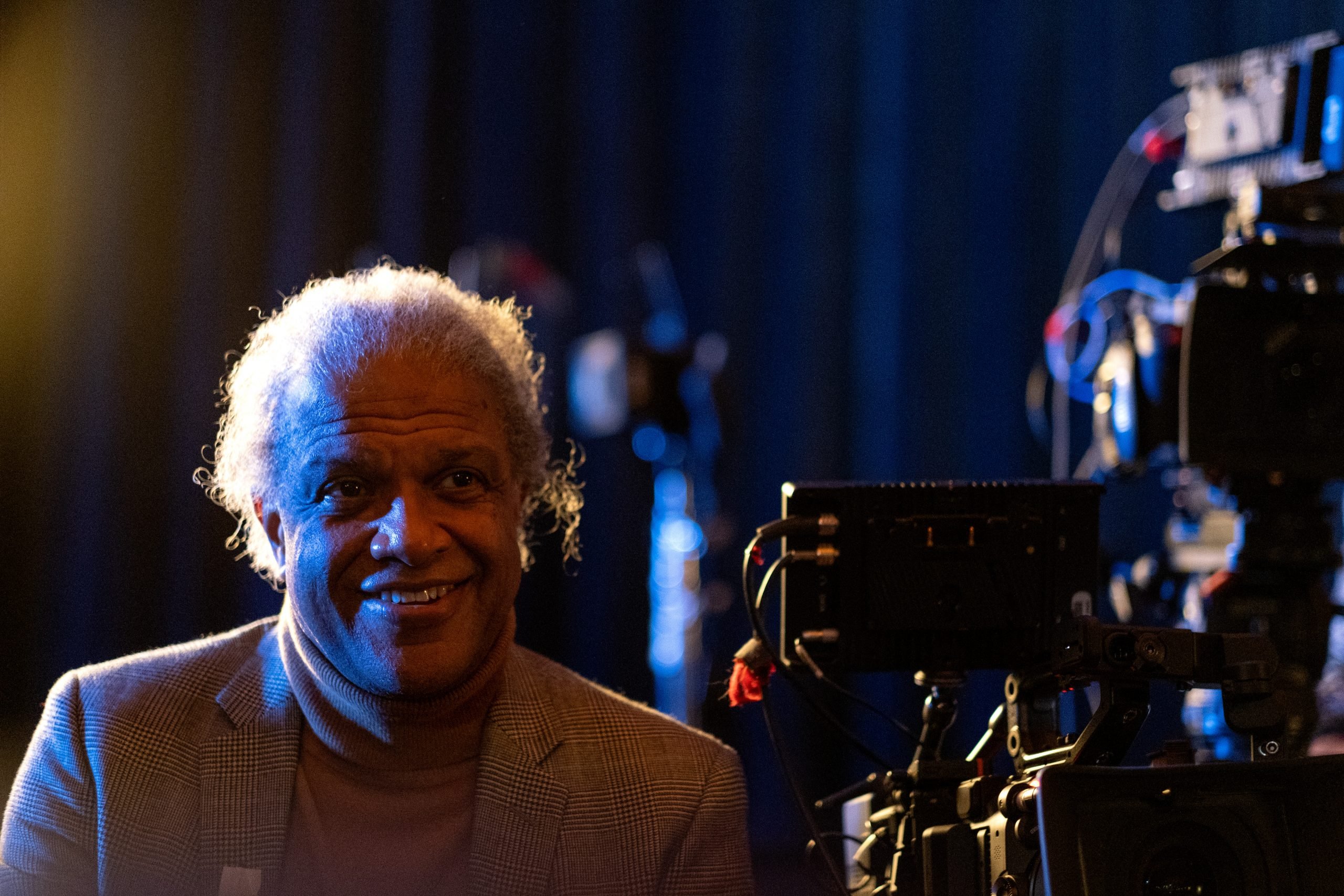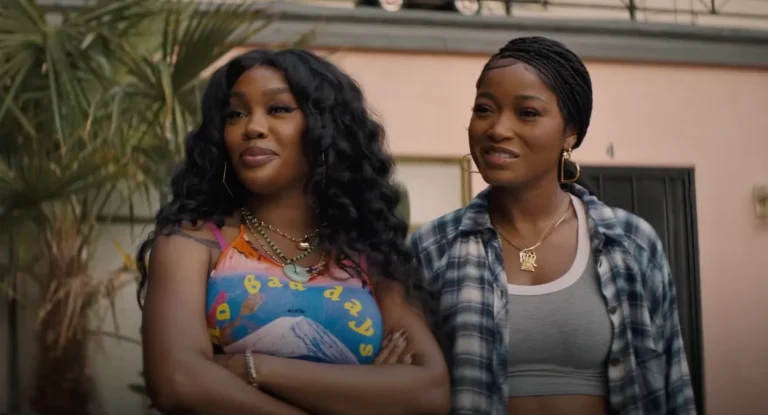Is That Black Enough For You?!? Explained:
“What happens to a dream deferred?
Does it dry up
like a raisin in the sun?
… Or does it explode?”
These lines were written by Langston Hughes in his poem, Harlem (1951). This poem seeks to capture the dream of racial equality and at once comment on the harrowing experiences of the Black community living in the USA, especially in Harlem. It, therefore, only makes sense that Elvis Mitchell, the writer, and director of the Netflix documentary, Is That Black Enough For You ?!? (2022), uses these famous lines to introduce the decade from 1968 to 1978, a historic period in Black cinema. Mitchell has etched out a film essay for us that takes its time – around 135 minutes in total – to weave the sociocultural and political premise for us to understand Blaxploitation, a sub-genre of exploitation films in Hollywood during the 1970s.
He introduces us right at the start to how his grandmother had her dreams shaped into stories by cinema. But Black representation in movies back in the day was either completely missing or confined to the typical roles of servant, bad guys, and cartoon caricatures. He progresses from the Golden Era of Hollywood to the period of the 70s not so much chronologically but with a hint of personally styled history lessons. The aim is to help the audience understand that the art produced for the screen was rooted in the imitation of real-life perceptions of the Black community and, therefore, in racial injustice and harrowing inequality suffered by the Blacks, or the African-American community in particular, at the hands of the White Americans. For example, he states that his grandmother had to fight the image of this Black stereotype from defining her as a woman of color from Mississippi as they made their way into the public subconscious. This led to her forbidding him from watching re-runs of The Andy Griffth Show (1960 -1968) on the pretext that it lacked the presence of any Black character in it. This decision to mix the personal and the political in this documentary keeps it from becoming a boring lesson in history.
The writing is exquisite. To talk about the casual stereotyping of Black men in Hollywood cinema when they found representation, he says, “If you were a Black actor, a black bow tie wasn’t putting on the ritz. It meant you were going to work. It was your uniform.”. He goes on to establish his dislike for tuxedoes or a “well-assembled ensemble”. The latter half of the film falls into a congruent shape, becoming more streamlined once he has laid out the complex mesh of intra-personal histories that governs the history of Black actors in cinema. He focuses on the career trajectories of Black actors as they earned fame by either feeding t0 populist White notions or opposing them. I had also started to keep a count of the number of films that may have found their way into the finely edited structure of this video essay but soon realized the count was threatening to cross 50+ films within the 70 minutes. So, I rested my pen to simply enjoy the brilliance of the show.
Mitchell slowly turns his gaze towards the decade from 1968 to 1978, the period in Black cinema which was about to shake up Hollywood and redefine the portrayal of the Black community in popular culture, for better and worse. He goes on to talk about Blaxploitation, one of the many pop culture motifs of the 1970s Black film renaissance.
Blaxploitation: A Brief History
The term blaxploitation is a blend of the terms ‘black’ and ‘exploitation’, the former signifying the ethnic group of African – Americans belonging to the USA and the latter a category of mostly B-grade films that appealed to popular trends. Junius Griffin coined the term in 1972, the year after the films Shaft and Sweet Sweetback’s Baadasssss Song had been released in the theatres to define this subgenre of films.
The films were stylistically marked by their generous use of zoom shots, a grainy film, and a sepia-tinted color palette. They were, after all, low-budget productions. These films were also defined by the generous use of violence and nudity in their plots, making most of them fit for consumption by an adult audience only. Mitchell’s documentary spends a good few minutes exploring the scene in Gordon Parks’ Shaft (1971), which re-defined how the camera perceived the black protagonist. Instead of obliquely observing a well-dressed John Shaft (played by Richard Roundtree), the camera directly gazes at it and doesn’t shy away from following him down a crowded street. It, according to him, revolutionized the course of movies.

Further, most of these films broke away from the tradition of using European-inspired musical scores and captured instead the live voices of the Black musicians, jazz artists, and performers to produce a holistic experience so essentially rooted in the 70s that it was difficult to look away from. Pam Grier, the legendary actress, helped subvert the role of the black woman in these films by starring in figures that made her appear assertive and resolute. Some blaxploitation films have also sought to also explore the roots of slavery, for example, Slaves (1969) by Herbert Biberman. While most people believed that blaxploitation films were a statement of empowerment of the Black community in the face of White supremacist thinking, it cannot be denied that they stereotyped the Black protagonist as souteneurs and their community as a hotbed for crime and drugs.
Why did Blaxploitation End?
According to film historians and culture analysts, the era of blaxploitation films ended in the late 1970s, making Disco Godfather (1979) one of the last blaxploitation films to be released in the decade. In this documentary, Mitchell ponders if Sidney Lumet’s The Wiz (1978), an all-Black re-imagining of Frank Baum’s famous novel, The Wonderful Wizard of Oz (1900), coupled with the freshly sprout conservative Reaganite sentiments could have been the reasons behind its early demise. Besides, the films started to receive more and more criticism from the audience and the critics for overplaying the stereotypes of the black protagonist (sometimes the anti-hero) so much that they were becoming misguided cultural markers of the black identity. The sub-genre, however, did not completely die down. The stylistic elements from blaxploitation films and their popular actors, such as Samuel L. Jackson and Pam Grier, went on to feature in films since the 1990s again. These films were mainly spoofs of the sub-genre and sought to explore the stereotypes comically while carving out better representations of the Black community in the scripts.
What is the significance of the Title ‘Is That Black Enough For You?!?’
The title of Mitchell’s documentary is derived from the film Cotton Comes to Harlem (1970) directed by Ossie Davis. The entire film finds a certain way of coming back to the line, “Is that black enough for you?” to make a snide remark on the power equations in the film’s narrative. Further, the background score of the film – an orchestra of voices – went on to chant the sentence to drive home the point of this sidelong glance at the reality of the Black community so conveniently shut out from mainstream media. Mitchell’s documentary, which also seeks to highlight the history of Black representation in cinema, especially through the period of the 1970s, dons this title as a nod of solidarity to the movement.
Concluding Thoughts on Is That Black Enough For You?!?
The documentary is powerful in how it chooses to engage the audience in a tryst with Black history. It doesn’t only harp on the injustices suffered by the community, but it goes on to talk about how slowly cinema has embraced Black people in their own element, focusing on them as rounded characters instead of painting them in a sad mimicry of White imagination. The narrative is interspersed with interviews of legends such as Whoopi Goldberg and Harry Belafonte to a much younger modern-day performer, Zendaya. The aim is to put forward the collective voice of the Black community and their ideas of Black representation. It shoots us into the future of Black representation and leaves us pondering how could do this better. It is a kaleidoscopic study of the Black community in cinema and an attempt at reclamation of Hollywood film canon drenched in Whiteness. It is one of the finest film essays I have experienced on the same till this day.









